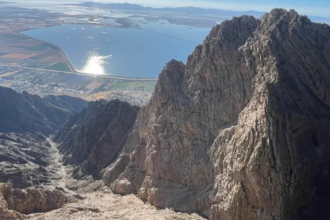The latest earthquake in China‘s Tibet region has once again left devastation in its wake. The death toll has now climbed to a staggering 95, with 130 others injured.
This is not the first time the region has faced such tragedy. Tibet has a long and tragic history of seismic activity. The 1950 Assam-Tibet earthquake, one of the most powerful ever recorded on land, claimed approximately 4,800 lives. More recently, the 2015 Nepal earthquake, which also affected Tibet, resulted in nearly 9,000 deaths and left a million structures damaged. The region’s geological instability is a ticking time bomb, and today’s disaster is a grim reminder of that reality.
The recent 6.8-magnitude earthquake struck near the city of Xigaze in Xizang, one of Tibet’s holiest cities. Shigatse region of Tibet, home to 800,000 people, also felt the impact of the quake.
According to the China Earthquake Networks Centre, the quake hit at 9:05 a.m. (0105 GMT), with its epicentre located in Tingri, a rural county known as the northern gateway to the Everest region, at a depth of 10 km (6.2 miles).
The quakes were felt as far away as Nepal and India, causing buildings to collapse and sending residents fleeing into the streets.
China’s President Xi Jinping has directed authorities to take “all-out” rescue efforts to search and rescue trapped people. The Chinese government has mobilized nearly 1,500 fire and rescue personnel to the area, but the full extent of the damage is still being assessed.
According to sources, some 22,000 items, including cotton tents, cotton coats, quilts, and folding beds, have also been sent to the quake-hit region.
The Tibetan Plateau’s seismic activity is well documented, yet each new quake seems to catch authorities off guard. One has to wonder: are we doing enough to prepare for these inevitable disasters, or are we simply waiting for the next catastrophe to strike?
So, what’s the plan, folks? Are we going to continue to be surprised every time the ground shakes, or will we finally invest in the infrastructure and preparedness needed to save lives? Because if history has taught us anything, it’s that the earth isn’t going to stop moving just because we’re not ready for it.
Let’s keep this conversation going in the comments below, and don’t forget to like, share, and subscribe for more updates.















